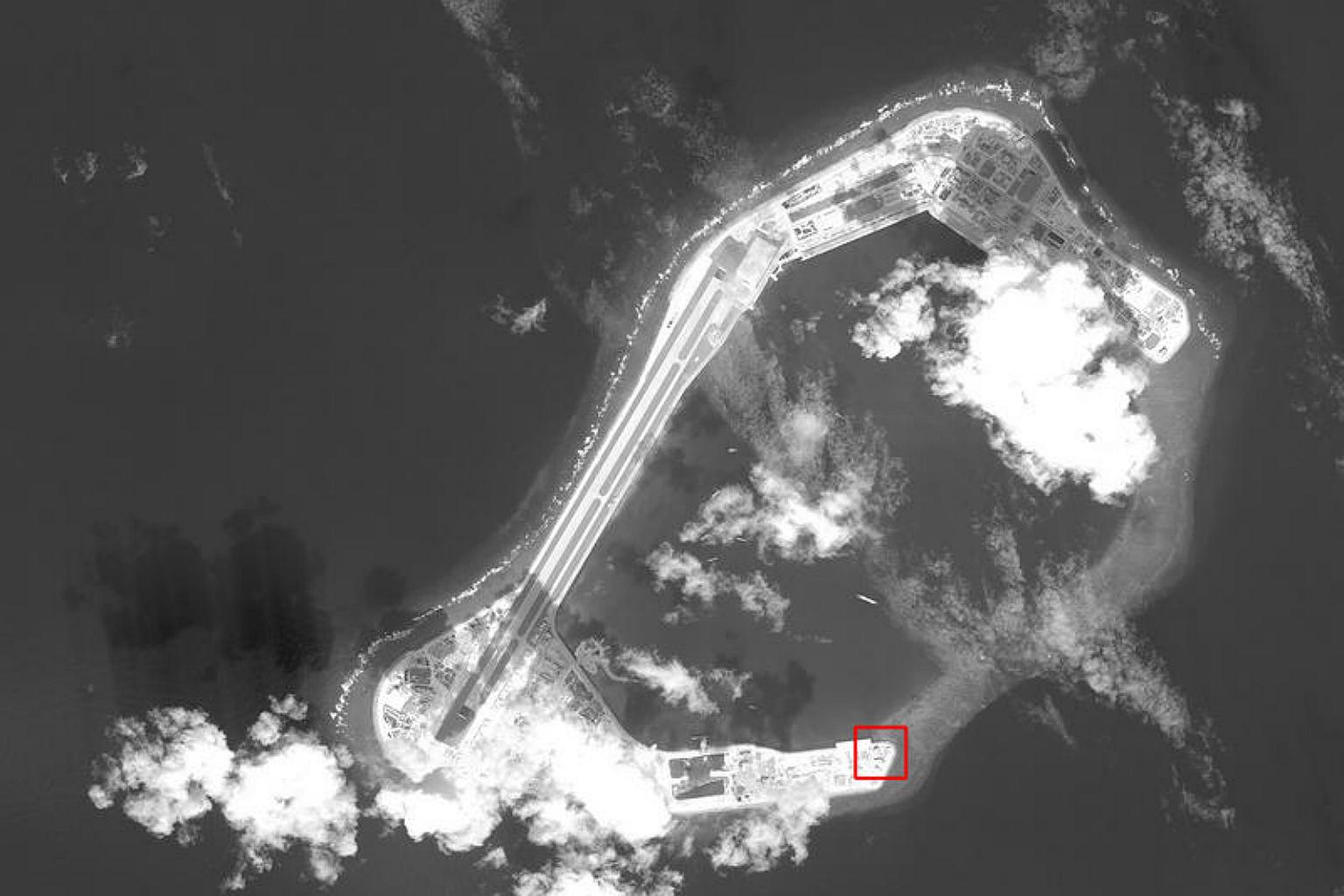Beijing can deploy warplanes on artificial South China Sea islands any time: US think-tank
Sign up now: Get insights on Asia's fast-moving developments

A satellite image shows what appears to be concrete structures with retractable roofs on the artificial island Subi Reef in the South China Sea.
PHOTO: REUTERS
Follow topic:
WASHINGTON (REUTERS) - China appears to have largely completed major construction of military infrastructure on artificial islands it has built in the South China Sea and can now deploy combat planes and other military hardware there at any time, a US think-tank said.
The Asia Maritime Transparency Initiative (AMTI), part of Washington's Centre for Strategic and International Studies (CSIS), said the work on Fiery Cross, Subi and Mischief Reefs in the Spratly Islands included naval, air, radar and defensive facilities.
The think-tank cited satellite images taken this month, which its director Greg Poling said showed new radar antennas on Fiery Cross and Subi. "So look for deployments in the near future," he said on Monday (March 27).
China has denied US charges that it is militarising the South China Sea, although last week Premier Li Keqiang said defence equipment had been placed on islands in the disputed waterway to maintain "freedom of navigation." China's Defence Ministry did not respond to a request for comment.
Chinese Foreign Ministry spokeswoman Hua Chunying said on Tuesday she was unaware of the details of the think tank's report, but added the Spratly Islands were China's inherent territory. "As for China deploying or not deploying necessary territorial defensive facilities on its own territory, this is a matter that is within the scope of Chinese sovereignty," she told a daily news briefing.
AMTI said China's three air bases in the Spratlys and another on Woody Island in the Paracel chain further north would allow its military aircraft to operate over nearly the entire South China Sea, a key global trade route that Beijing claims most of.
Several neighbouring states have competing claims in the sea, which is widely seen as a potential regional flashpoint.
The think-tank said advanced surveillance and early-warning radar facilities at Fiery Cross, Subi, and Cuarteron Reefs, as well as Woody Island, and smaller facilities elsewhere gave it similar radar coverage.
It said China had installed HQ-9 surface-to-air missiles at Woody island more than a year ago and had deployed anti-ship cruise missiles there on at least one occasion.
It had also constructed hardened shelters with retractable roofs for mobile missile launchers at Fiery Cross, Subi and Mischief and enough hangars at Fiery Cross for 24 combat aircraft and three larger planes, including bombers.
US officials told Reuters last month that China had finished building almost two dozen structures on Subi, Mischief and Fiery Cross that appeared designed to house long-range surface-to-air missiles.
In his Senate confirmation hearing in January, new US Secretary of State Rex Tillerson angered China by saying it should be denied access to islands it had built up in the South China Sea.
He subsequently softened his language, saying that in the event of an unspecified "contingency," the United States and its allies "must be capable of limiting China's access to and use of" those islands to pose a threat.
In recent years, the United States has conducted a series of what it calls freedom-of-navigation operations in the South China Sea, raising tensions with Beijing.

